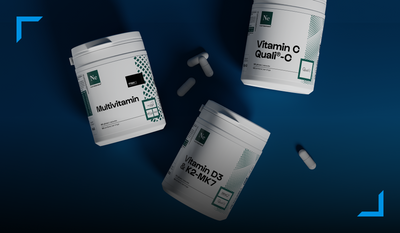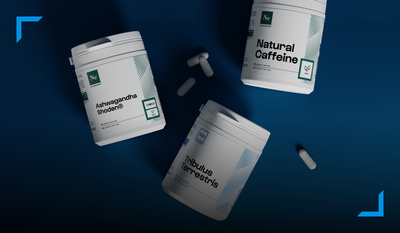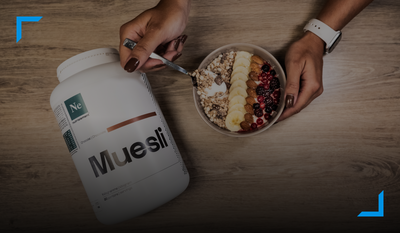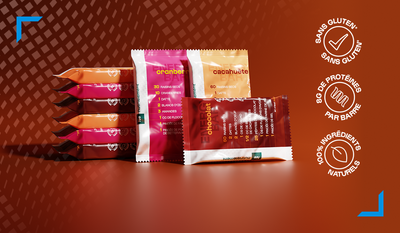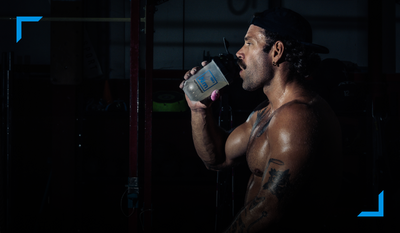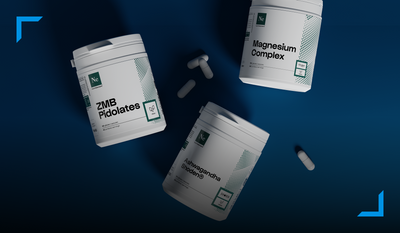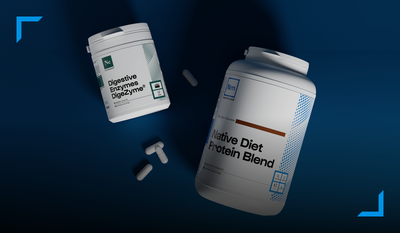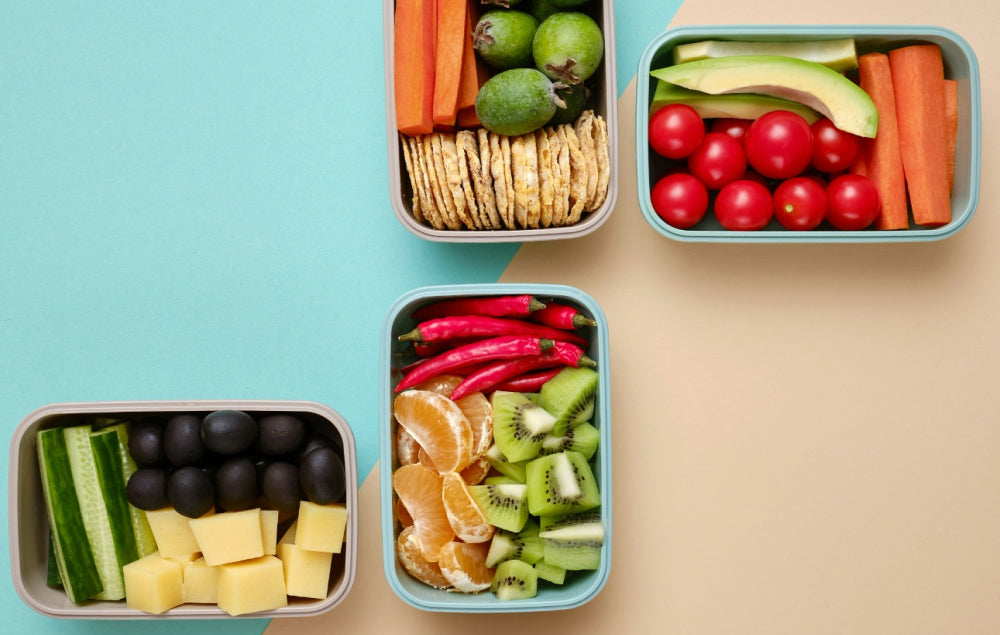0 commentaires
Understanding how many calories to consume each day is essential to maintaining a healthy weight and achieving fitness goals. Our caloric needs are influenced by several factors such as age, gender, height, body composition, and physical activity level. This article explores how to accurately determine these needs, adjust your intake for weight loss, and effectively distribute your calories throughout the day for a balanced and satisfying diet.
What do our daily caloric needs depend on?
Before talking numbers, it is important to understand what influences our energy needs. Several factors come into play (1):
- Age : The older we get, the slower our metabolism becomes and the fewer calories we need.
- Gender : For equal weight, men have higher needs than women.
- Height and weight : The taller and larger you are, the more energy you expend.
- Body composition : lean mass (muscles, organs) consumes more energy than fat mass, even at rest.
A muscular person will therefore have greater needs (2). Physical activity: sport and daily activity considerably increase needs.
How to accurately calculate your caloric needs?
To know your needs precisely, you must first calculate your basal metabolic rate (BMR). This is the minimum energy your body needs at rest to operate your vital organs. BMR represents 60 to 75% of your total energy expenditure (1). There are several equations to estimate BMR, but the most used is that of Harris and Benedict (3):
- Female: MB = 9.74 x weight (kg) + 172.9 x height (m) - 4.737 x age + 667.1
- Man: MB = 13.75 x weight (kg) + 500.3 x height (m) - 6.755 x age + 66.47 For example, for a 30-year-old woman weighing 60 kg and measuring 1m65: MB = 9.7460 + 172.91.65 - 4.737*30 + 667.1 = 1366 kcal/day
But that's just the first step! To know your total needs, you need to multiply your MB by a coefficient reflecting your physical activity level (PAL) (4):
- Sedentary: NAP = 1.4
- Low activity: NAP = 1.6
- Active: NAP = 1.8
- Very active: NAP = 2
So if our thirty-year-old is active, her needs will be: 1366 x 1.8 = 2459 kcal/day You can easily redo the calculation with your own data. But remember that on average, the recommended caloric intake is around 2000 kcal/day for a woman and 2500 kcal/day for a man (5).
How many calories to lose weight?
Now that you know your needs to maintain your weight, let's see how to adjust them to lose a few pounds. The principle is simple: you have to create a caloric deficit , that is, eat less than you expend (6). A deficit of 500 kcal/day is often recommended, because it allows you to lose about 0.5 kg per week, or 2 kg per month (7). This is a reasonable pace for sustainable weight loss without frustration.
How to distribute your calories throughout the day?
Once you have set your daily calorie intake, you still need to know how to distribute it throughout the day. In practice, it is often recommended to divide your intake into 3 main meals and 1 to 2 snacks (8):
- 20-25% on breakfast
- 30-35% at lunch
- 30-35% at dinner
- 5-10% for each snack
But you can definitely adapt these benchmarks according to your preferences and lifestyle. The important thing is not to skip meals and to have balanced intakes throughout the day. In terms of diet, focus on filling and low-calorie foods such as vegetables, fruits, legumes, low-fat dairy products and white meats (9). Limit ultra-processed foods rich in sugars, fats and empty calories. And hydrate yourself well , water contributes to the feeling of satiety (10).
Our calorie needs depend on our age, gender, build, body composition and physical activity. They must be calculated precisely to find your balance. To lose weight , a deficit of 500 kcal/day allows you to lose 0.5 kg per week gently. Sport helps to increase the deficit without reducing your intake too much. Spread your calories throughout the day at your own pace, favoring filling and low-calorie foods. You now know everything about calories and how to adapt your intake to your needs and goals. But remember that beyond the numbers, the most important thing is to have a balanced diet and enjoy your meal. Calories are just one benchmark among others to find your sustainable ideal weight !
References
- ANSES. (2016). Update of the PNNS benchmarks: Revision of the food consumption benchmarks. https://www.anses.fr/fr/system/files/NUT2012SA0103Ra-1.pdf
- Black, AE, Coward, WA, Cole, TJ, & Prentice, AM (1996). Human energy expenditure in affluent societies: an analysis of 574 doubly-labelled water measurements. European journal of clinical nutrition, 50(2), 72-92.
- Cava, E., Yeat, N.C., & Mittendorfer, B. (2017). Preserving healthy muscle during weight loss. Advances in nutrition, 8(3), 511-519.
- Chambers, L., McCrickerd, K., & Yeomans, M.R. (2015). Optimizing foods for satiety. Trends in Food Science & Technology, 41(2), 149-160.
- Hall, KD, Sacks, G., Chandramohan, D., Chow, CC, Wang, YC, Gortmaker, SL, & Swinburn, BA (2011). Quantification of the effect of energy imbalance on bodyweight. The Lancet, 378(9793), 826-837.
- Longo, V.D., & Mattson, M.P. (2014). Fasting: molecular mechanisms and clinical applications. Cell metabolism, 19(2), 181-192.
- Müller, MJ, Bosy-Westphal, A., & Heymsfield, SB (2013). Is there evidence for a set point that regulates human body weight? F1000 medicine reports, 2, 59.
- Parretti, H.M., Aveyard, P., Blannin, A., Clifford, SJ, Coleman, SJ, Roalfe, A., & Daley, AJ (2015). Efficacy of water preloading before main meals as a strategy for weight loss in primary care patients with obesity: RCT. Obesity, 23(9), 1785-1791.
- Raynor, HA, & Champagne, CM (2016). Position of the Academy of Nutrition and Dietetics: interventions for the treatment of overweight and obesity in adults. Journal of the Academy of Nutrition and Dietetics, 116(1), 129-147.
- Roza, A.M., & Shizgal, H.M. (1984). The Harris Benedict equation reevaluated: resting energy requirements and the body cell mass. The American journal of clinical nutrition, 40(1), 168-182.
- Seagle, HM, Strain, GW, Makris, A., Reeves, RS, & American Dietetic Association. (2009). Position of the American Dietetic Association: weight management. Journal of the American Dietetic Association, 109(2), 330-346.
- Trumbo, P., Schlicker, S., Yates, AA, Poos, M., & Food and Nutrition Board of the Institute of Medicine, The National Academies. (2002). Dietary reference intakes for energy, carbohydrate, fiber, fat, fatty acids, cholesterol, protein and amino acids. Journal of the American Dietetic Association, 102(11), 1621-1630.




